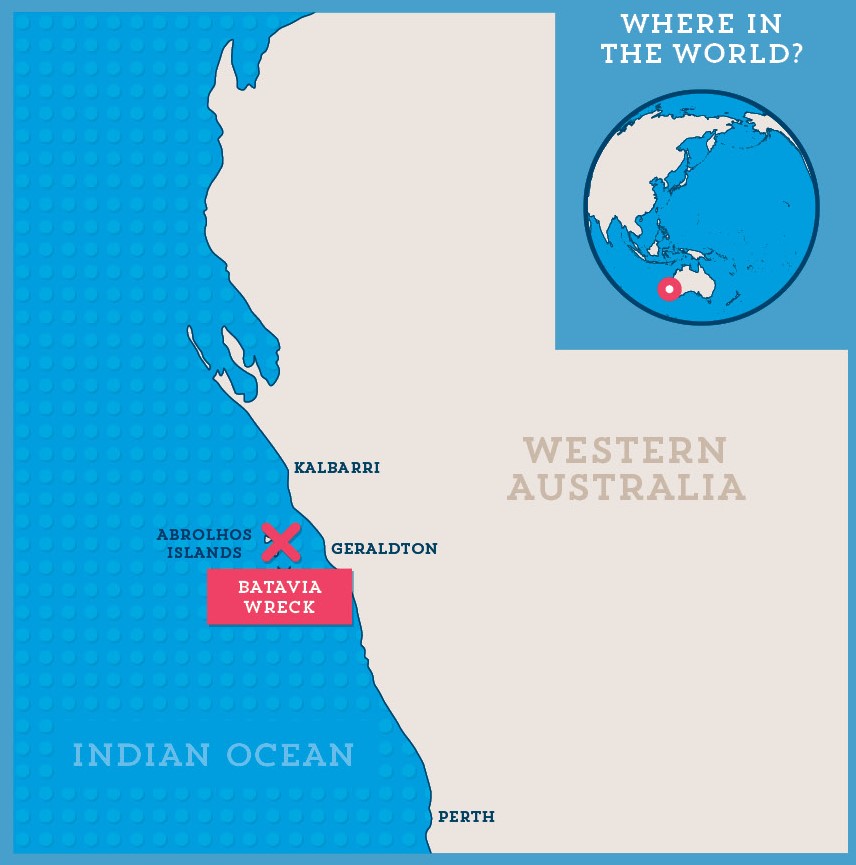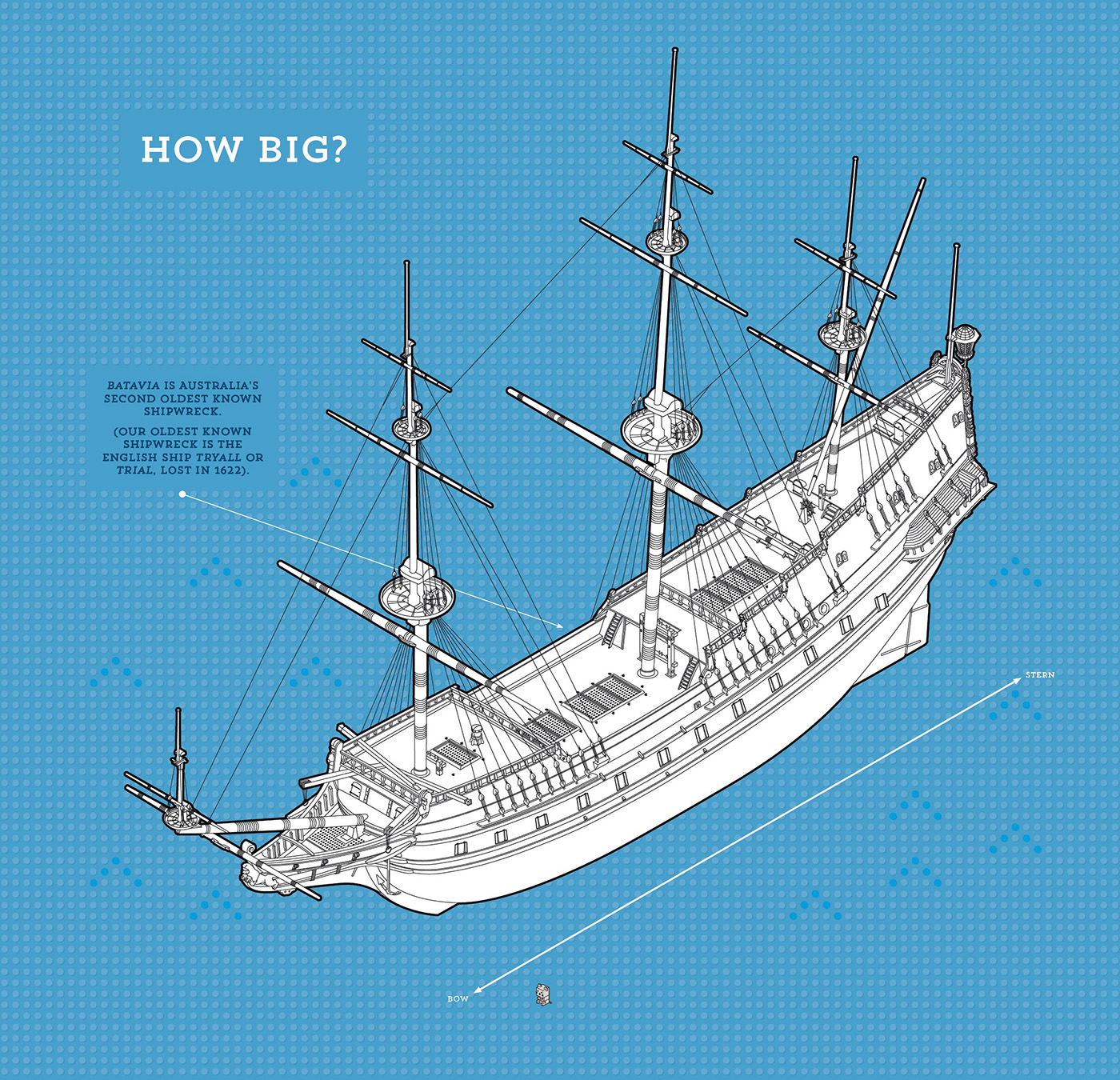BATAVIA – WRECKED ON 4 JUNE 1629
Like Vasa, Batavia was on its maiden voyage when disaster struck, but had made it a lot further – to the other side of the world.
Batavia left Holland in October 1628 carrying trade goods, chests of coins, building supplies and more than 330 people. It was taking them to its namesake Batavia (now Jakarta, capital of Indonesia), where it was to buy spices to take back to Europe.
Francisco Pelsaert commanded the fleet, above the resentful captain Jacobszoon, who plotted with the ship's pharmacist Corneliszoon to steal the ship and all the money. But before they could attack, the ship hit a reef at the Houtman Abrolhos islands off Western Australia.

The survivors and some supplies were ferried to nearby islands, but there was little food or water. Pelsaert took the ship’s longboat to the mainland to look for water, but having no luck, sailed the 3,000 km to Batavia for help.
Corneliszoon seized the moment and took command of the supplies, weapons and survivors. In the weeks that followed, he and his followers murdered around 125 men, women and children. He was eventually captured by some of the soldiers he’d stranded on another island. When Pelsaert returned three months after leaving, he punished the murderers and rescued the survivors.
In the 1970s, archaeologists from the WA Museum began excavating the wreck of the Batavia, and later investigated the graves on the islands. Their ongoing research into this mix of both land and underwater sites reveals more and more of this fascinating and gruesome story.
